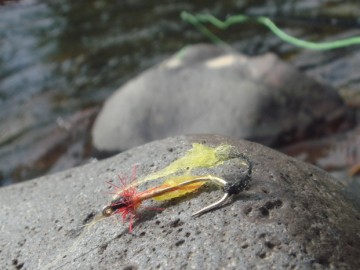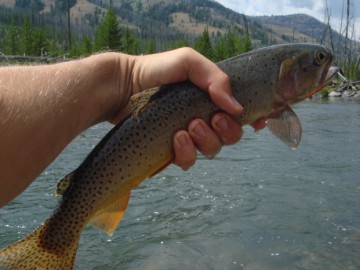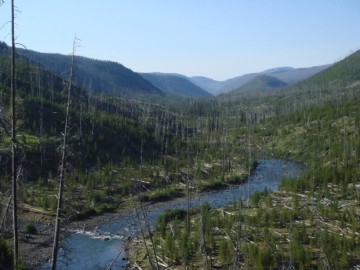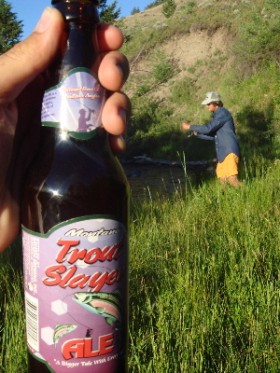
Cutthroat trout.
This article has been created in partnership between Matador and our friends at the State of Montana.
My fingertips are bleeding, sliced raw by the sharp little teeth of wild cutthroat trout. The fly I’m using is all chewed-up too, a hopper pattern that’s been reduced to a little yarn and loose thread on the slim shank of a barbless hook. Dew is dry and the mountain sun has climbed high over the rim of the Lamar valley.





